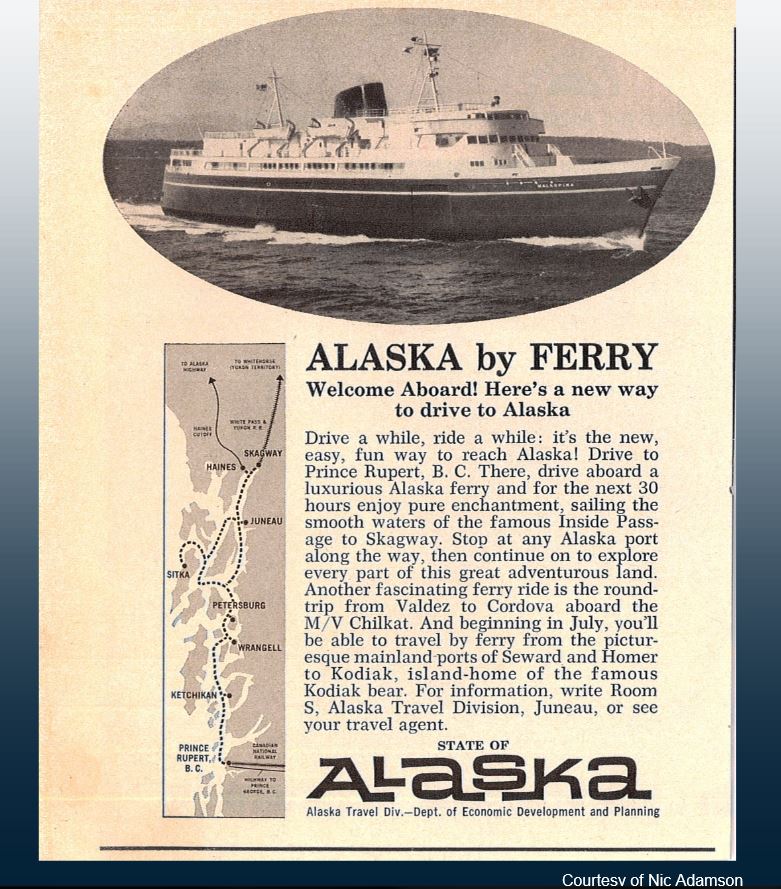
More than a dozen people from across coastal Alaska testified in support or offered suggestions on how to improve the state’s ferry system. They also lamented cost-cutting that many blame for higher fares, more frequent mechanical breakdowns and long gaps in service.
“Ferries were once the most reliable way to travel around Southeast but now many of us opt for small planes because of so many ferry cancellations,” said Shannon Donahue in Haines. “Ferry ridership also dropped when it became prohibitively expensive to put a car on the ferry.”
The Alaska Marine Highway Reshaping Work Group held an open line for three hours on Wednesday afternoon. It’s working against a September 30 deadline to make formal recommendations to the governor on the future of the ferry fleet.
Many of the callers expressed well-worn sentiments: that the marine highway is critical infrastructure for communities off the road system.
“We are not using the ferries for frivolous, discretionary travel any more than the residents of Wasilla who drive to Anchorage,” said Carl Becker in Cordova on Prince William Sound, which has seen deep cuts to service.
David Berg of Viking Travel in Petersburg says his travel agency does a lot of business with out-of-state visitors. But with a summer schedule not posted until March 1, he says most tourists have already made their plans and opt to fly or travel on a cruise ship.

He also says the recent introduction of dynamic pricing — which raises fares as space on the boat dwindles — fails to take into account the fleet’s COVID-19 mitigation policy that’s reduced passenger and vehicle capacity on the vessels. That, he says, “artificially raises the rates.”
“You take a ship that can carry, say 400 people, and reduce the load by blocking seats to 100, and suddenly the program thinks a ship is three quarters full,” he explained. “And up go the dynamic rates.”
There were also voices from the villages. Christina Dick says the state is losing potential revenue from Medicaid since unreliable schedules are forcing patients to fly to Juneau on small planes for medical appointments.
But she says that’s not always an option in Hoonah where she lives and works.
“We have a lot of patients that don’t like to fly or have a fear of flying or medical conditions that prevent them from flying,” she said.
Callers from the edge of the system in the Aleutians chimed in on the importance of a ferry connection to Dutch Harbor.
Travis Swangel phoned in to retell his last experience trying to fly home from Anchorage.
“They basically kind of laughed us out a line when they saw our three large dog crates and all her luggage and everything,” he recalled. But then he saw that the Tustumena ferry was scheduled to depart from Kodiak that evening. Its route terminates in Dutch Harbor. “So we quick jumped on a flight to Kodiak and was able to make the sailing and get home a few days later and actually beat people that were stuck in Anchorage still standing by — by the hundreds — trying to get on an airplane.”
Others expressed support for breaking the marine highway off from the Department of Transportation. Proponents of reform say that would allow more long-term planning and insulate its management from political appointees.
Others questioned whether that could lead to less transparency or would further harm its funding support from the legislature.
The working group is holding a second round of testimony from 4 to 6 p.m. Wednesday, September 2. It’s also accepting written comments via email: DOT.AMH-Reshaping@alaska.gov.









